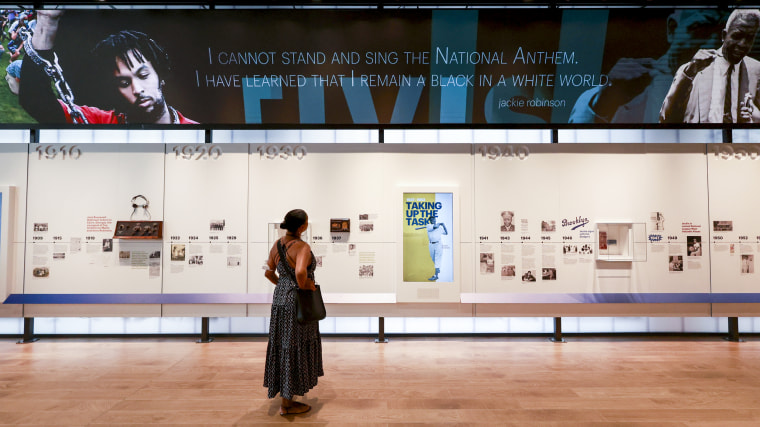The new Jackie Robinson Museum is encouraging the next generation of social justice activists.
The museum, which had its ribbon-cutting ceremony on Tuesday, features memorabilia from the baseball great and highlights his work and activism in the Black community.
One prominent wall display in the museum is titled “Speak out, stand up,” which encourages people to commit to a social justice initiative they care about, while holding them accountable, said Della Britton, president and CEO of the Jackie Robinson Foundation, the nonprofit organization behind the creation of the museum.
“It’s for groups to come in and take on an issue, whether it’s LGBTQ, whether it’s global warming and then — it’s actually also a sort of a museum strategy to get people to stay involved, which is having a competition,” Britton said of the display which serves as part of the museum’s scheduled programming.
The museum also highlights major efforts Robinson implemented to help the Black community throughout his life. As reflected in the museum exhibits, Robinson started his own bank after learning that certain banks were denying mortgage loans to Black people. He also started a housing development corporation and built 200 units throughout New York City. Britton said a lot of people aren’t aware of all Robinson’s contributions.
“We want them to learn about him and his life, because there are a lot of people who don’t know,” said Britton. “But we also want them to be inspired, to continue the work, to go forward and to start to get involved and become involved civically.”
Following the museum’s ribbon-cutting, individuals gathered for a reception near the museum, where the movie “After Jackie” was screened. One of the major hurdles Robinson faced throughout his baseball career was discrimination, which other Black baseball players also experienced even after his death in 1972.
CC Sabathia, a Black retired baseball pitcher, told TODAY that many Black baseball players continue to experience barriers. Sabathia uses his current positions as special assistant to the commissioner of MLB and vice president of the board of directors of the Players Alliance to help address these challenges.
“If you look around the league, there’s no utility players that are Black,” he said. “There’s never, like, a 25th, 26th man on the roster, so you always pretty much have to be the best player if you want to play in the league.”
Sabathia said one of Robinson’s major goals in working with MLB is “to give the guys more opportunities to play and more opportunities to play more positions.”
“For me, I would love to see the game where it was when I grew up in the late ‘80s, early ‘90s, when we made up a lot of the representation of the league, and it was super diverse.


